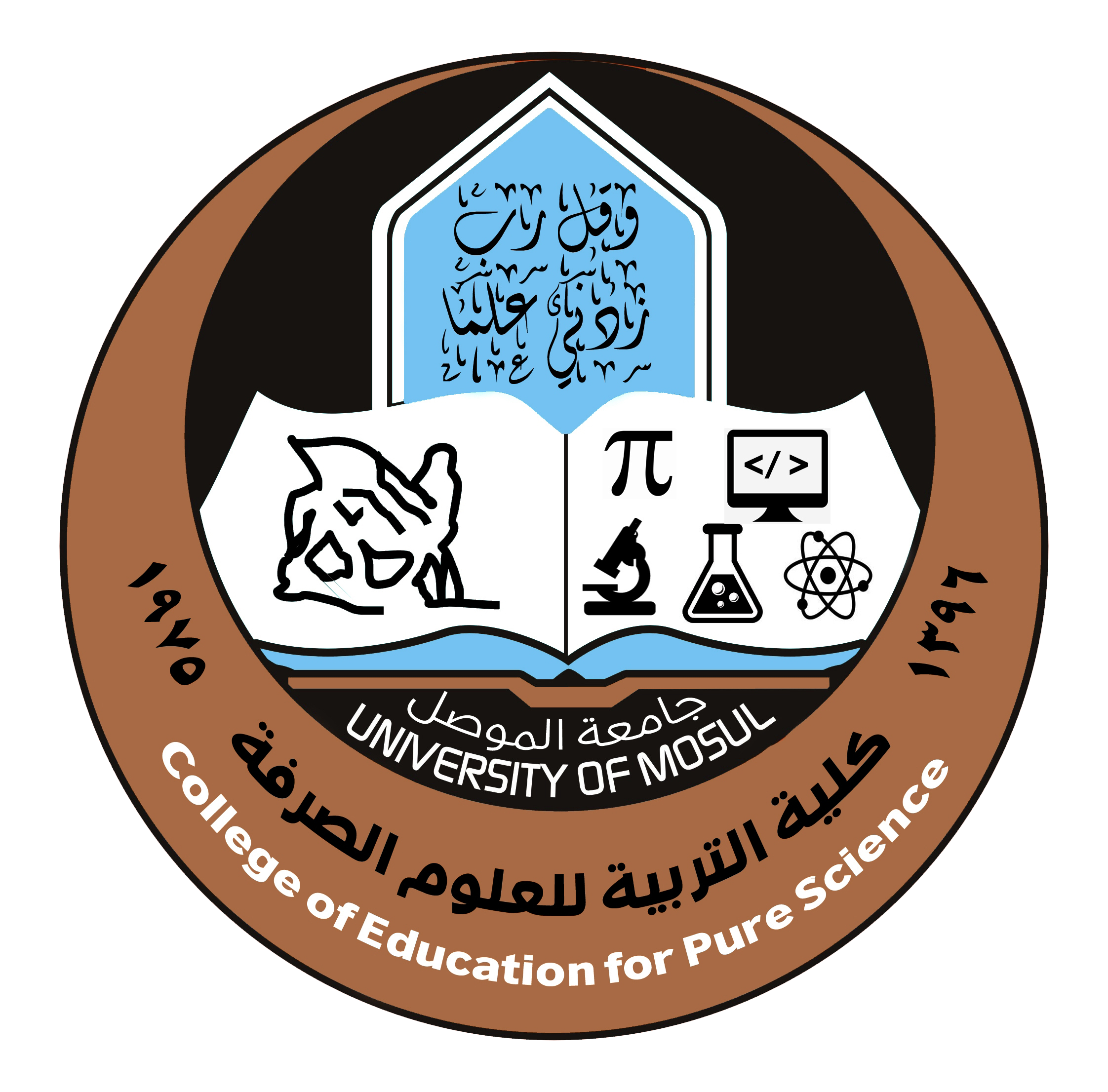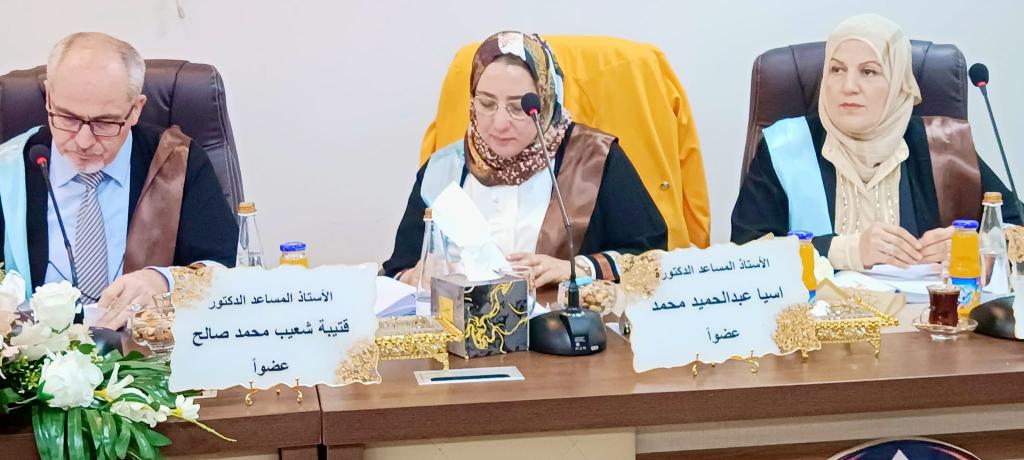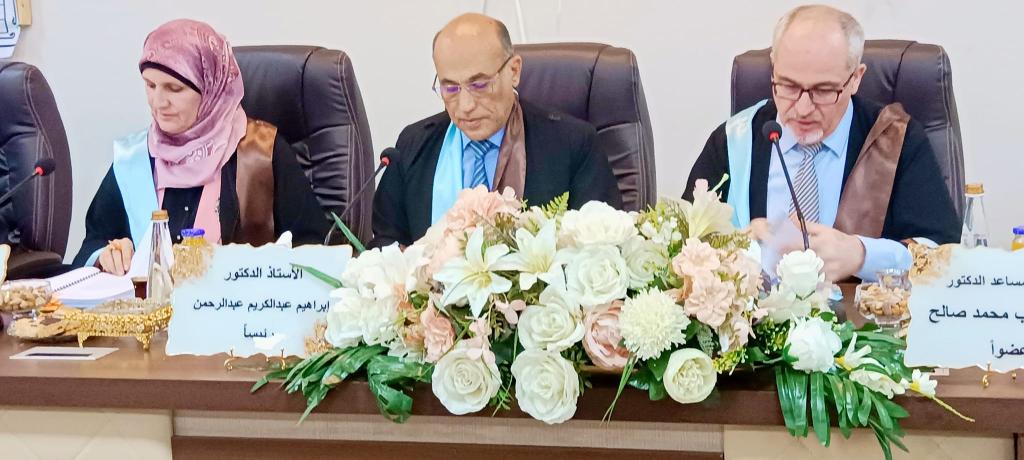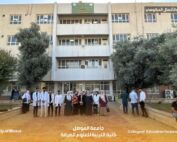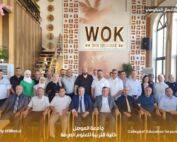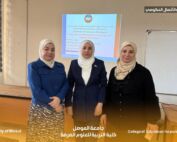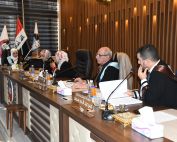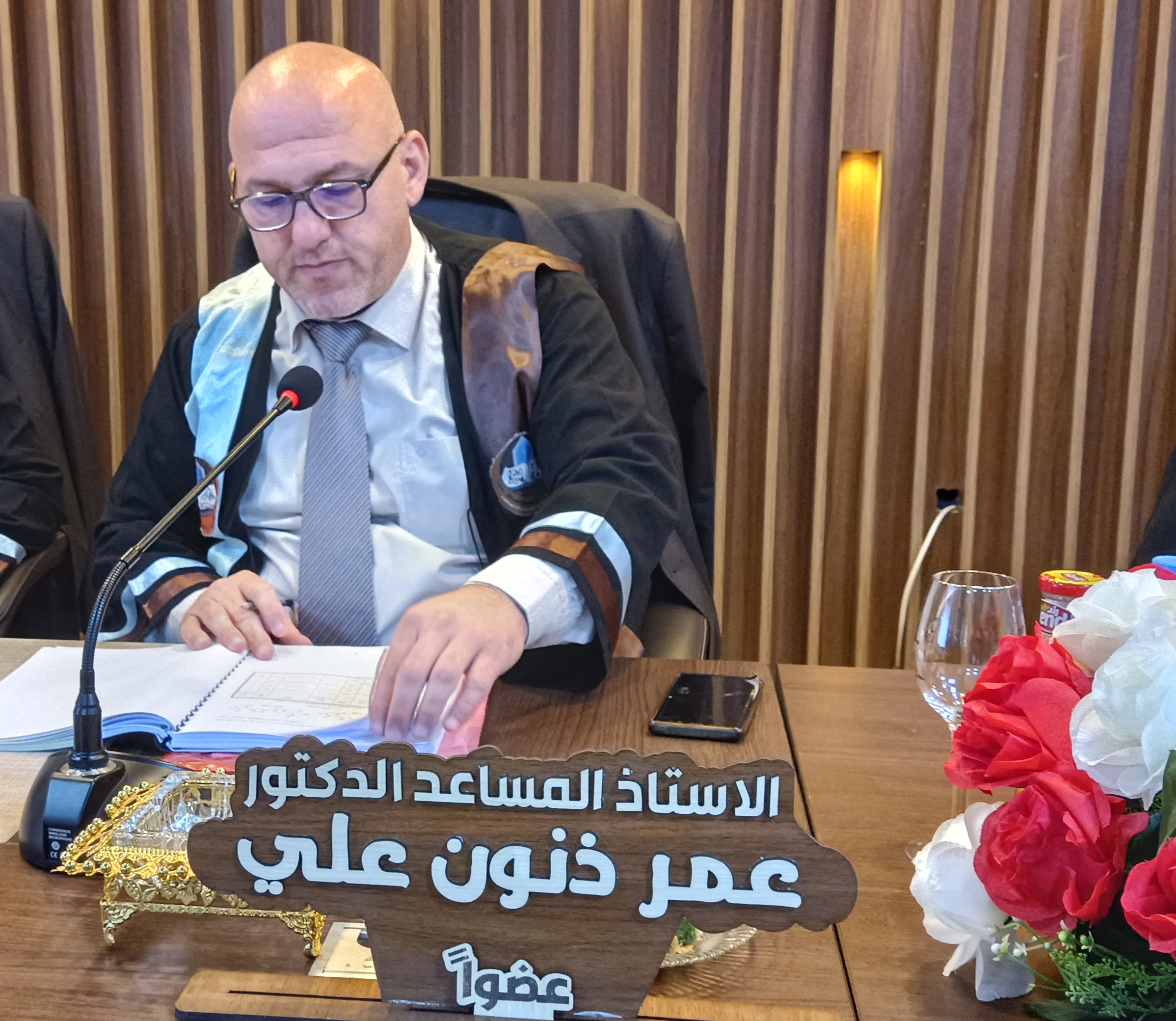26 October، 2022
PH.D. Dissertation Viva-Bioilogy Department
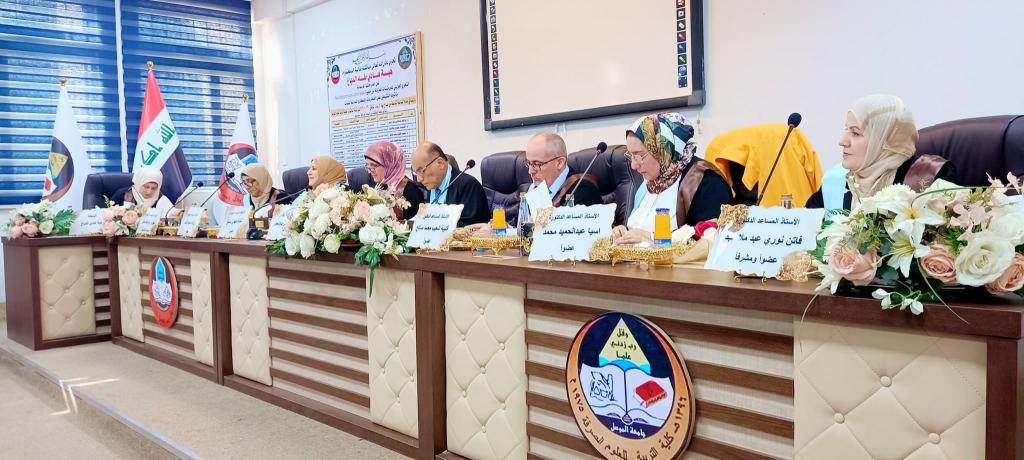
PH.D. Dissertation Viva in the College of Education for Pure Science entitled ” Molecular investigation of proteins isolated from Saccharomyces cerevisiae and their inhibitory effect on phytopathogenic fungi and bacteria “The College of Education for Pure Science, University of Mosul, has done the PH.D. Dissertation Viva entitled ” Molecular investigation of proteins isolated from Saccharomyces cerevisiae and their inhibitory effect on phytopathogenic fungi and bacteria “,On Wednesday, October 26, 2022, the respected Dean of the College, Assistant Professor Dr. Qais Ismail Ibrahim, the Honorable Scientific Associate and Administrative Associate, the Honorable Head of the Department of Biology, and a number of the college’s teachers were attended the viva. This study, presented by the PH.D. Student Hiba Hadi Taha Al-Dabbaghin the Department of Biology, included isolation 110 local isolate of yeasts from different sources such as different types of fruits, soil and orange leaves in Mosul / Iraq. High percentage frequency for yeast Saccharomyces cerevisiae and diagnosed this yeasts depend on phenotypic, microscopic and biochemical tests, and the diagnosis of some of them was confirmed using a Vitek system. As for the two isolates of S. cerevisiae their was confirmed using molecular diagnosis by Polymerase Chain Reaction ( PCR) with specialized primers for gene of Internal Transcribed Spacer (ITS). It was noted that one bundle was separated for each isolate with a size of 550-650 base pairs. When studying the sequence of the nitrogenous bases of DNA the presence of sites of genetic variation or heterogeneity when compared with the gene ITS In the NCBI and you gave the code OM760491 and ON168448 respectively as will as diagnosed Aureobasidium pullulans molecularly and given the code OK614102.1 at the World Genebank.The study also included isolation and identification of many fungi from different types of soils in the city of Mosul / Iraq depend on their phenotypic and microscopic characteristics. They isolated 161 isolates, and the highest percentage of fungi frequency was 26.7% for the fungus Aspergillus niger, and the lowest percentage frequency is 0.6% for each of the Bipolaris sp.,Fusarium oxysporum,The soil of garlic plant was the highest fungal diversity, where 22 isolates, and the lowest soil with fungal diversity was strawberry soil, where the number of isolates reached 2 isolates.Two local isolates of Agrobacterium were also obtained from the University of Baghdad, it was diagnosed by biochemical tests and other standard isolations, and a microscopic diagnosis was made using a Gram stain and that noted them Gram-negative bacillus, as well as a test of its pathogenicity on carrot discs by using a injury method, as it was observed that tumors appeared Crown gall on the surface of carrot discs were two isolates of local bacteria Agrobacterium tumifaciens because of its contain the plasmid that induced the formation of tumors, and the appearance of capillary Hairy roots on carrot discs after infection with standard bacteria Agrobacterium rhizogenes 15834 rife because it contain a plasmid that induced the formation of Hairy roots. It was also moleculer diagnosis for the two local isolates type A. tumifaciens by using polymerase chain reaction (PCR), The appearance of single and non-dispersed bundles as evidence of the purity and high concentration of DNA and the amplification was using specific primers for gene 16s rRNA and the bands with a size of 1250 base pairs appeared for both isolates.The assay resistance and sensitivity for Antibiotic were performed on two isolates of bread yeast S.cerevisiae and three isolates of Agrobacterium under study, it was noted that two yeasts isolates are resistant to antibiotics Rifampicin, Tetracycline, Gentamicin, Ciprofloxacin, Roxythrompicin, Erythromycin and Cefotaxime,It was sensitive only Nystatin antibiotic. As for three isolates Agrobacterium, it showed resistance to the following antibiotics such as Rifampicin,Tetracycline ,Erythromycin,Ciprofloxacin,Roxythrompicin and Nystatin also sensetive with Gentamicin and Cefotaxime.The result of test a Cross-antagonism between S.cerevisiae with types of pathogenic bacteria such as Agrobacterium was that isolate 2 of bread yeast was more effective on bacteria, as it inhibited the three types of bacteria compared with isolate 1 of bread yeast in which there was no inhibition of the isolate A.rhizogenes and a low inhibition of the isolateA.tumifaciens1 but very good inhibition of A.tumifaciens 2.On the other hand test the effect cruid filtrate of S. cerevisiae on plant pathogenic fungi It was observed that the percentage of inhibition of yeast 2 higher than yeast 1 on the three pathogenic fungi Alternaria alternata, Aspergillus niger and Fusarium solani with inhibition ratio 65.83, 64.03 and 76.83% Respectively, the highest effect of both filters was on F.solani.It was shown from the results of the microplate test experiment of raw filtrate of bread yeast on plant pathogenic bacteria Agrobacterium by dilution method to determine the minimum inhibitory concentration Microplate MIC AssayThe higher the concentration of the filtrate, the greater the inhibition of bacteria Agrobacterium of the three types, Yeast filtrate 2 was more effective on bacteria than Yeast filtrate 1 and more inhibiting occurred for the isolation.A.tumifaciens1Less discouraging was isolation A.rhizogenes When estimating the minimum inhibitory concentration (MIC)Minimum Inhibitory ConcentrationFor leaching of bread yeast on bacteria, it was found that the fourth dilution of 6.25 mg / ml is the minimum inhibitory concentration for three bacterial isolates were inhibited by the two types of bread yeast filtrate. This study is the first of its kind to use bread yeast to inhibit Agrobacterium.It was detection of the active substances in the filtrate of bread yeast S.cerevisiae by Using a high-performance liquid chromatography HPLC It was shaped like clear curves, which might be a kind of killer toxins Therefore, electrophoresis was performed to extract and characterize the protein on a polyacrylamide gel by method SDS – PAGE,The protein bands appeared on the gel, and the protein was determined depend on the molecular weight, which was estimated at 5 kilodalton. Killer toxin 28 It was used in subsequent studies, and the isolation of this killer toxin was confirmed using HPLC by compared with the standard sample.The Viva committee was chaired by Prof. Dr. Ibrahim A.Al –Rahman / University of Fallujah /College of Science and the membership of Asst. Prof. Dr. Shifa Mahdi Salih / University of Mosul /College of Education for Pure Science, Asst. Prof. Dr. Qutaiba Shuaib Mohammed Salih Al-Nema / University of Mosul /College of Education for Pure Science, Asst. Prof. Dr. Asia Abdulhamid Mohammed Saadullah / University of Duhok /College of Science, Asst. Prof. Dr. Warka Saeed Qassim Al-Taee / University of Mosul / College of Science and under the supervision and membership of both Asst Prof. Dr. Najwa Ibrahim Khalil Al-Barhawee / University of Mosul /College of Education for Pure Science and Asst. Prof Dr. Faten Noori Abed Mula Abed / University of Mosul /College of Science.
